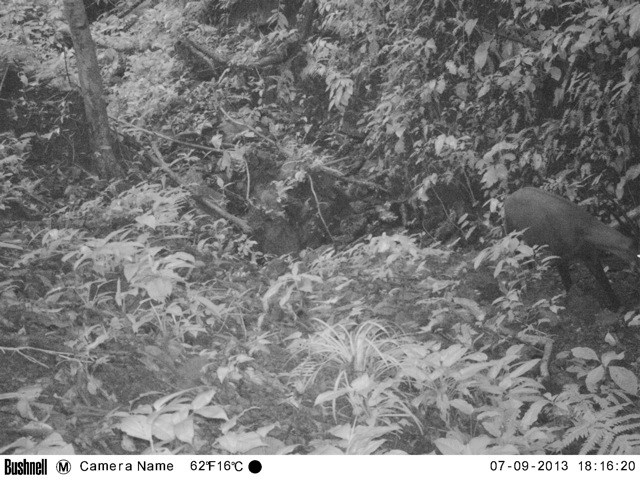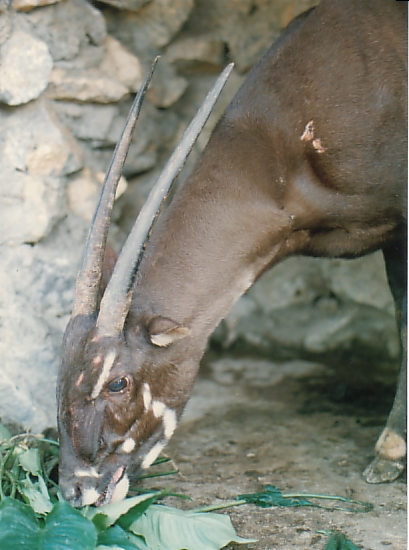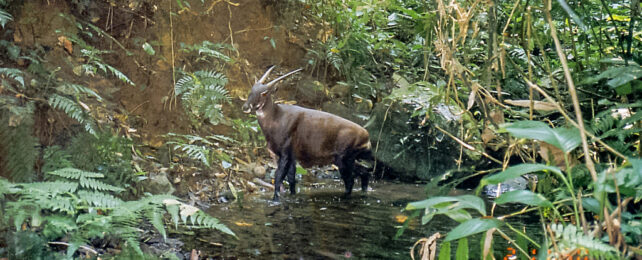Scientists have sequenced the genome of one of the rarest animals in the world: the 'Asian unicorn', which hasn't been seen in more than a decade. The first-of-its-kind genetic analysis offers new hope that the species could be saved from the brink of extinction – if it's not already too late.
The saola (Pseudoryx nghetinhensis, and pronounced saw-la) is a bovine that hangs out in the mountainous forests of Vietnam and Laos. It sports a pair of long, straight horns on its head and distinctive white markings on its face.
The Asian unicorn moniker comes, if not from its horned head, then its extreme rarity – it wasn't scientifically described until 1993, and has still never been seen in person by scientists or studied in the wild. A few dozen have been captured by locals, but sadly they've all died within months.
The saola is considered critically endangered by the International Union for Conservation of Nature (IUCN), with an estimated population ranging from 50 to up to a few hundred individuals. But with its last confirmed sighting being a camera trap photo in 2013, there are fears that it might have gone extinct in the meantime.

Now, an international team of scientists has used skin, hair, bone, and other tissue samples to reconstruct the saola genome for the first time, putting together a reference genome and the sequences of 26 individuals. That allowed the researchers to piece together its surprising history, hinting at some potential good news for its conservation chances.
First, the bad news: The saola's genetic diversity has been in decline since the last Ice Age. In fact, the team estimates that no more than 5,000 individuals have existed at any one time in the last 10,000 years.
The good news, however, is that there seems to be two genetically distinct populations – northern and southern. And while genetic diversity has declined in both populations over time, they've lost different sections of their genetic code, which could be key to their recovery.
"We were quite surprised to find that the saola is split into two populations with considerable genetic differences. The split happened between 5,000 and 20,000 years ago," says Genís Garcia Erill, biologist at the University of Copenhagen in Denmark.
"The genetic variation lost in each population complements the other. So, if you mix them, they could compensate for what the other is missing."
Scientists have already been working on building a captive breeding program, but it wasn't clear whether they'd have enough genetic diversity to be viable.
The discovery of the dual populations raises hopes that it just might work, and simulations of various conservation scenarios conducted in the study suggest this could be their best bet.

"If we can bring together at least a dozen saolas – ideally a mix from both populations – to form the foundation of a future population, our models show the species would have a decent chance of long-term survival," says biologist Rasmus Heller at the University of Copenhagen.
This of course depends on finding enough live specimens – a daunting task, given it's been 12 years since even one has been spotted. But the new genetic analysis could aid scientists in the search.
"Many researchers have unsuccessfully tried to find traces of saola through methods like environmental DNA in water and even in leeches, the blood suckers inhabiting the same habitat," says Minh Duc Le, zoologist at Vietnam National University.
"These techniques all rely on detecting tiny DNA fragments, and now that we know the complete saola genome, we have a much larger toolkit for detecting those fragments."
The research was published in the journal Cell.
